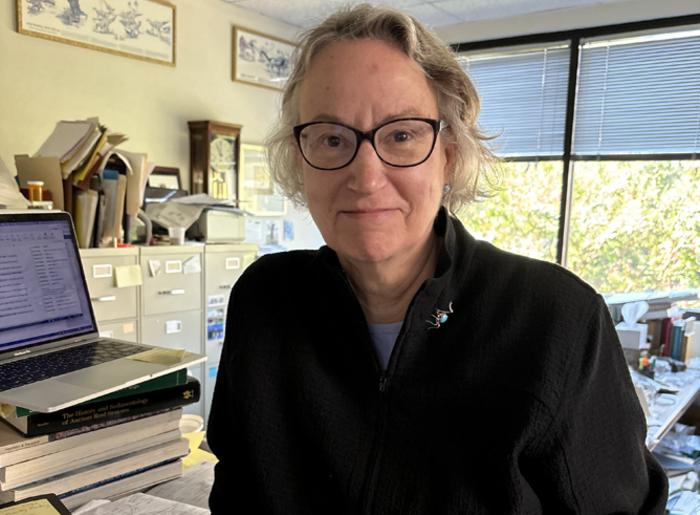Dr. Anne Raymond, a professor in the Department of Geology and Geophysics at Texas A&M University, has received the Gilbert H. Cady Award from the Energy Division (EGD) of the Geological Society of America (GSA).

Credit: Dr. Anne Raymond
Dr. Anne Raymond, a professor in the Department of Geology and Geophysics at Texas A&M University, has received the Gilbert H. Cady Award from the Energy Division (EGD) of the Geological Society of America (GSA).
The Cady Award recognizes outstanding contributions to the field of coal geology and, in Raymond’s case, honors a lifetime of research on ancient and modern wetlands, including work on the origin of permineralized peat in Pennsylvanian-aged swamps from 300 million years ago. She was selected by the EGD Board, and their decision was approved by the GSA Council.
“Anne’s perseverance in coal geology research is remarkable,” said Dr. Julie Newman, professor and head of Texas A&M A&M Geology and Geophysics. “She thinks outside the box, driving scientific progress in fresh and surprising directions.”
Raymond and her fellow major GSA Division awards recipients were featured in a public announcement in the July issue of GSA Today. She will be presented with her award at the EGD Business Meeting during the fall GSA Annual Meeting, set for Sept. 22-25 in Anaheim, California.
Raymond is cited for not only her outstanding contributions to the study of coal balls, ranging from paleobotany to plant paleoecology and carbonate geochemistry, but also her decades of effort in training paleopalynologists (fossil pollen experts), many of whom have pursued extensive careers in the petroleum industry.
“This research would not have been possible without the analytical tools and expertise available in the Texas A&M Department of Geology and Geophysics,” Raymond said. “Our access to a state-of-the-art electron microprobe, the colleagues who assisted my students and me in learning to use it, and the support from the Harold J. Haynes Fund ’46 Endowment for graduate student research on the microprobe were all crucial.”
The Energy Geology Division of the GSA includes over 900 members from various parts of the geological community, such as state and national geological surveys, colleges, and businesses. Its main goal is to offer a place where scientists can share their research findings and talk about common issues related to studying energy resources. They aim to encourage research and the exchange of ideas about energy resources and their geological importance. Additionally, the division works together as a group to promote these goals within the GSA.
By Grant Hawkins, Texas A&M University College of Arts and Sciences
###



